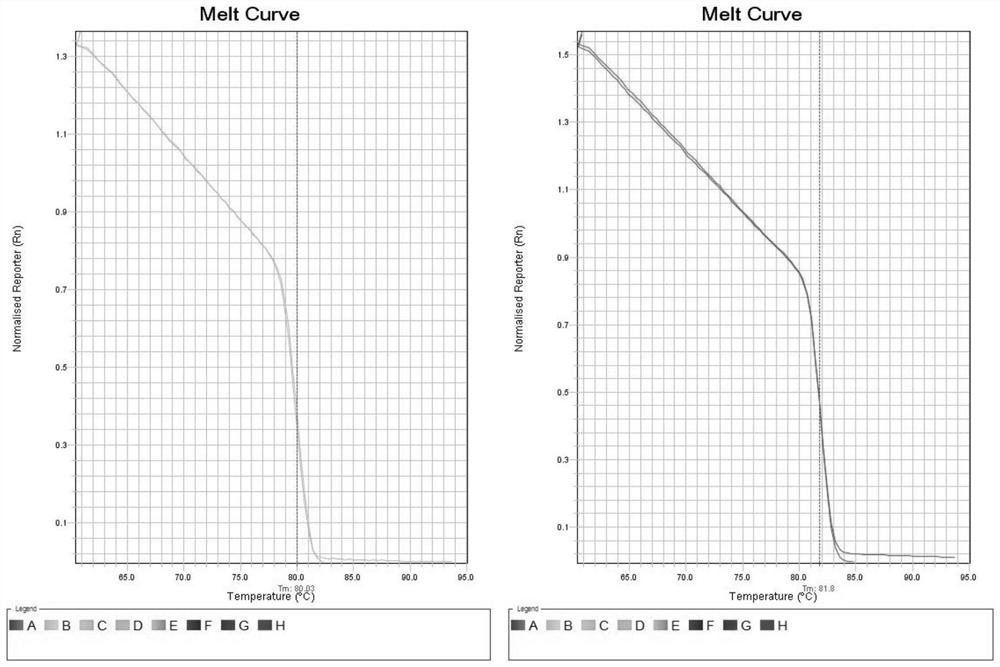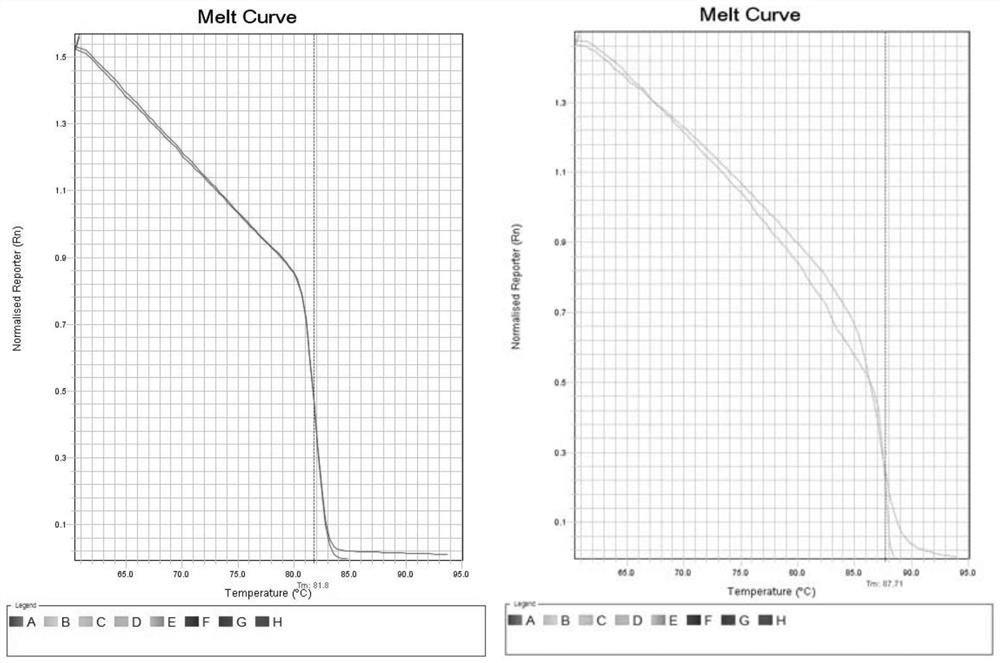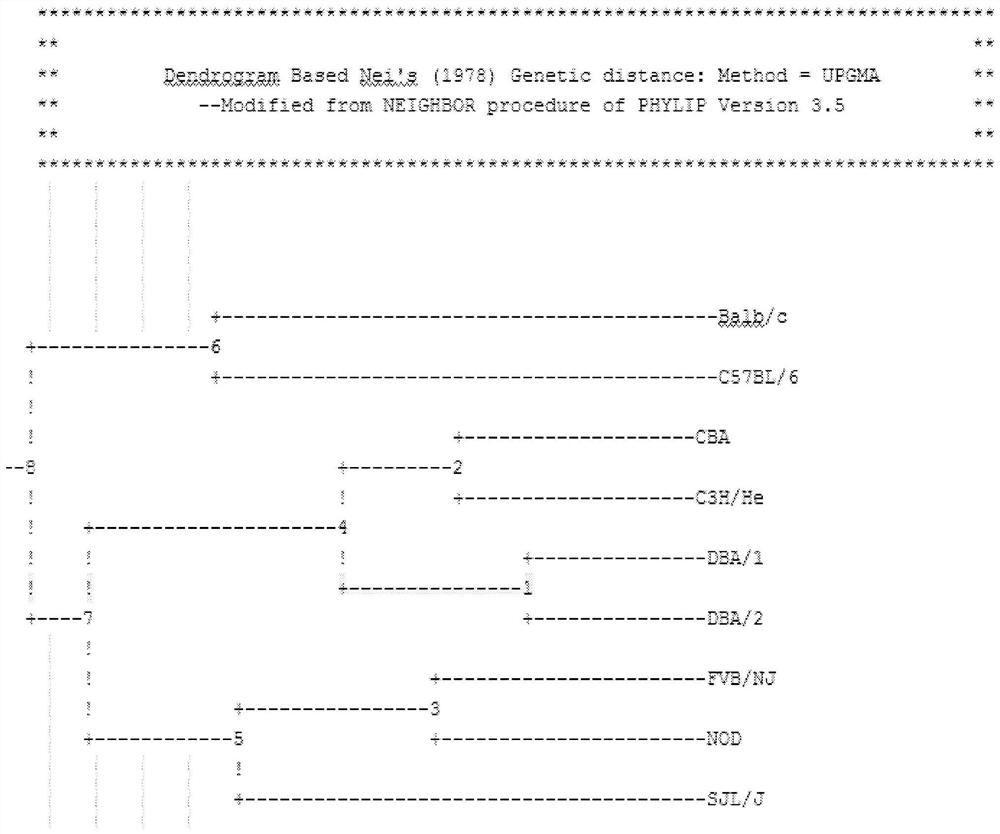A method for monitoring the genetic quality of inbred mice using microsatellite technology
A technology of inbred strains and mice, applied in recombinant DNA technology, biochemical equipment and methods, microbial measurement/testing, etc., can solve the problems of low primer specificity and polymorphism, and easy judgment errors
- Summary
- Abstract
- Description
- Claims
- Application Information
AI Technical Summary
Problems solved by technology
Method used
Image
Examples
Embodiment 1
[0127] Embodiment 1, the search of mouse microsatellite locus
[0128] 1. Preliminary screening
[0129] The whole genome sequence of mouse GRCm38.p2 was obtained from the GenBank mouse database. Afterwards, the inventors used BamHI and EcoRI to cut the genome sequence into short sequences, analyzed the short sequences with a length of 100-600 one by one, and searched for repeat sequences of 3, 4, 5, and 6 bases. The statistical results are shown in Table 1.
[0130] Table 1. Screening statistics of mouse microsatellite loci
[0131]
[0132] 2. Further screening
[0133] A search was performed on each chromosome in turn to pick a locus for a four-base repeat sequence containing "TATC". The inventors found that there are still very many such sites, which need to be further screened. In combination with experience and analysis, except the Y chromosome, the inventor selected suitable sites on each chromosome, which were not covered in the Genbank database, and initially ...
Embodiment 2
[0148] Embodiment 2, inbred mouse identification
[0149] In this example, use the primer pairs screened in the preceding Example 1 to identify inbred mice and determine whether different inbred mice can be distinguished: BALB / c, C57BL / 6, CBA, DBA / 1, DBA / 2, FVB, C3H / He, NOD, SJL / J.
[0150] Collect the mouse tails of 9 mouse strains, namely BALB / c, C57BL / 6, CBA, DBA / 1, DBA / 2, FVB, C3H / He, NOD, SJL / J, and extract their genomic DNA respectively , DNA concentration was adjusted to 50ng / ul.
[0151] PCR reaction system total 15ul):
[0152]
[0153]
[0154] PCR reaction program:
[0155] First, pre-denature at 94°C for 3 minutes;
[0156] After that, denaturation at 94°C for 15s, annealing at 55°C for 15s, extension at 72°C for 30s, 35 cycles.
[0157] ABI3730 sequencer electrophoresis:
[0158] Mix 1.5 ul of the 10-fold diluted PCR product with 0.25 ul of the ROX500 internal standard, incubate at 95°C for 5 min, and then rapidly ice-bath for 3 min. An ABI3730 seque...
PUM
 Login to View More
Login to View More Abstract
Description
Claims
Application Information
 Login to View More
Login to View More - R&D
- Intellectual Property
- Life Sciences
- Materials
- Tech Scout
- Unparalleled Data Quality
- Higher Quality Content
- 60% Fewer Hallucinations
Browse by: Latest US Patents, China's latest patents, Technical Efficacy Thesaurus, Application Domain, Technology Topic, Popular Technical Reports.
© 2025 PatSnap. All rights reserved.Legal|Privacy policy|Modern Slavery Act Transparency Statement|Sitemap|About US| Contact US: help@patsnap.com



